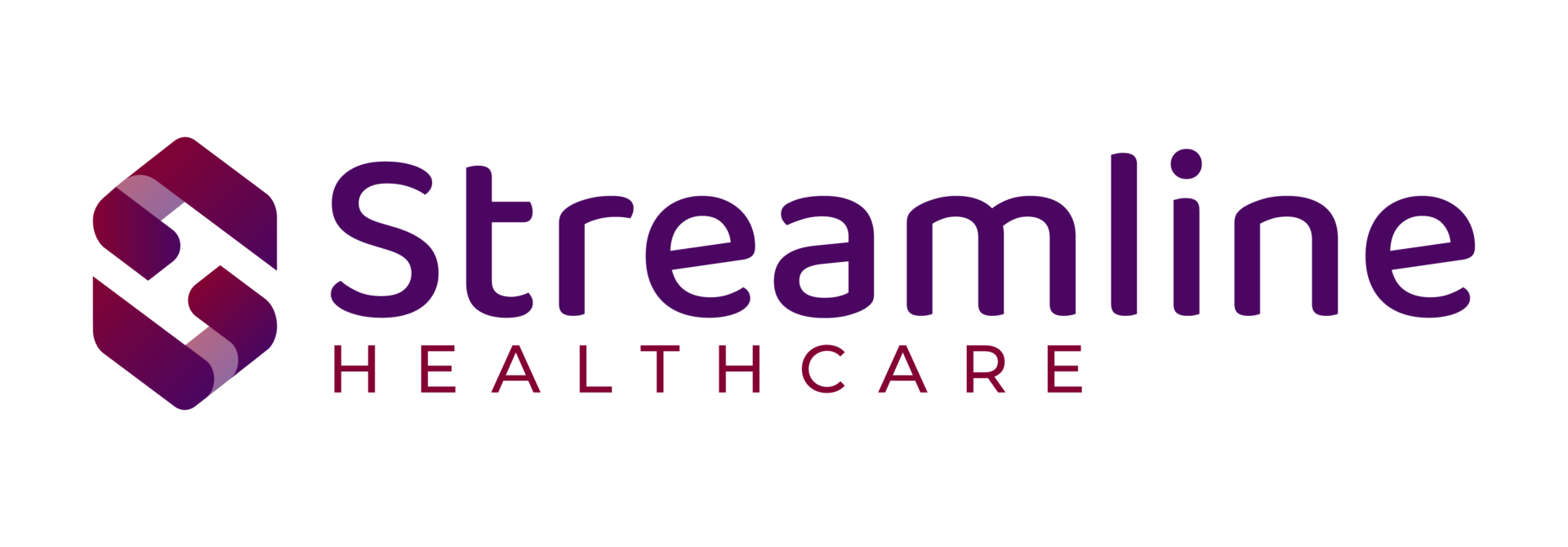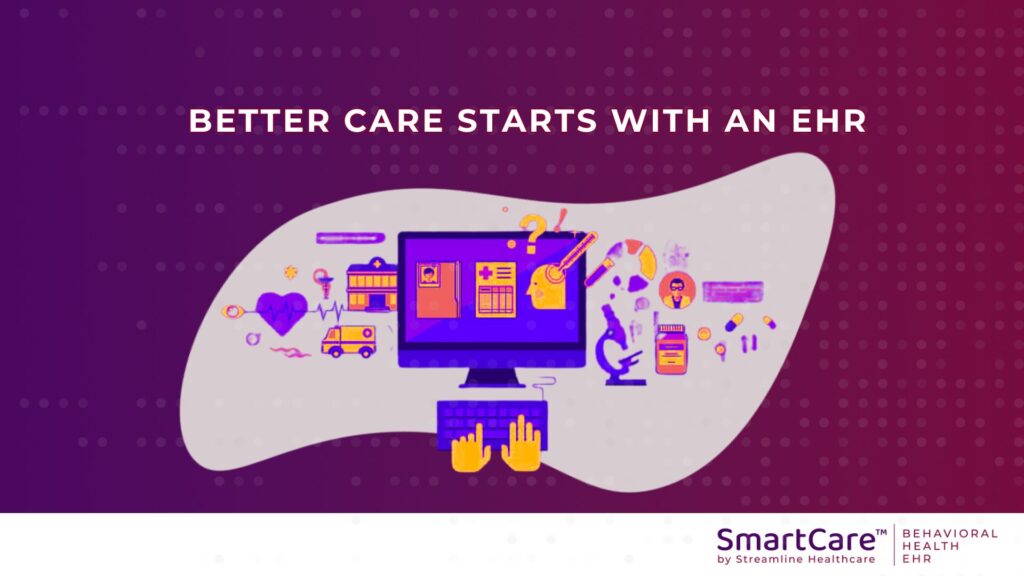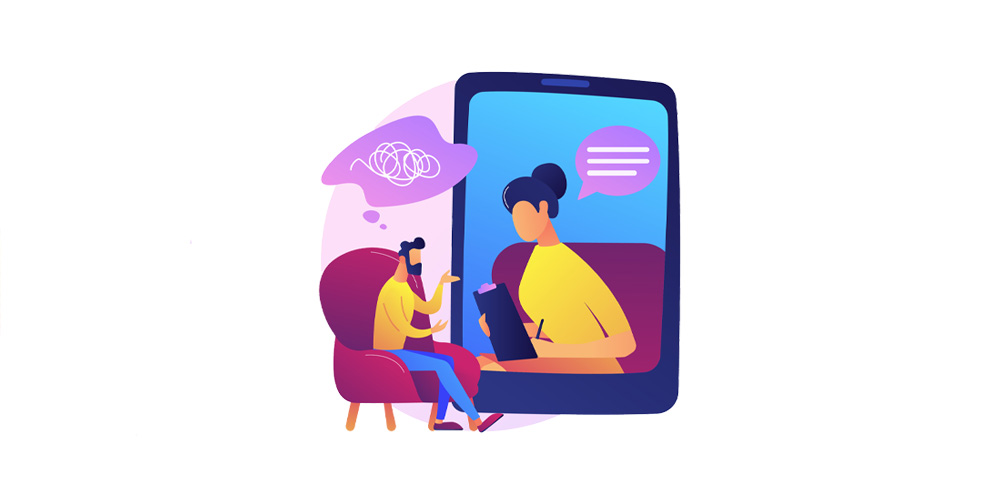A recent survey of clinicians pointed to Electronic Health Records (EHR) technology as the second most common reason for clinician burnout.
A digital version of a client’s health record, EHR was introduced in order to drive advancements in client care, increase efficiencies, make payments easier, and improve reporting and collaboration of care. In an ideal world, it should be a central location for all of a client’s important information, in order for the behavioral health and medical communities to provide the best care possible. Because information can be shared across various care settings, EHRs can contribute to complete and comprehensive care for all clients.
But along with the benefits that come from the EHR, are some disadvantages. Clinicians across most specialties report seeing an impact on employee satisfaction. One survey noted that clinician EHR use “nearly doubled the time and expense of clinical practice for most direct client care clinicians, including clinicians in training, without increasing any type of reimbursement.” Not only are clinicians spending more time entering client information without getting paid for it, but the EHR has also been cited as the leading cause of job dissatisfaction and emotional fatigue. With this loss of enthusiasm for their work comes a strong desire to leave.
For clinicians who got into the health field because they were passionate about people, their enthusiasm wanes when they spend less time face-to-face with clients. Clinicians care about care. They care about their clients and people in general. But unnecessarily complex EHR systems are forcing a shift in their focus, causing clinicians to spend more time in front of their computer screens and less time with clients, more time clicking through screen after screen than caring for people. When you’re spending long hours doing what you love, it’s worth it. When you’re spending long hours in front of a computer screen, away from what you love, then you face a high likelihood of burnout.
The problem is not with the EHR system itself. Electronic Health Records are capable of streamlining a lot of tasks and information. Clinicians should be able to personalize them to fit their practice and their clients, track patient behavior and mental health state, and add important client information that will help deliver quality care.
Unfortunately, for many clinicians, this isn’t happening. What is happening is that clinicians are spending full days seeing clients, trying to fill in all of the appropriate information in the time between appointments (if there is any), and then using time at night or at home to complete what they couldn’t during the day. They are spending significant amounts of time searching for data, constructing orders, documenting client stories, and responding to communications outside of business hours. When they can’t complete these tasks, they are viewed as the problem. In an already financially stressed specialty like mental and behavioral health, this can contribute to already existing problems.
But the real problem lies in the learning curve behind mastering most EHR systems. It’s the design, implementation, and training behind these tools that prevent clinicians from utilizing them correctly. They are often so complex that they can’t be used with any kind of efficiency. Though, it’s not impossible to have an EHR system that is easy to use. SmartCare, our web-based electronic health record (EHR) application, is built for the delivery, management, and coordination of healthcare services of all types. It’s an intuitive system focused on one-click technology and drill downs. Its simplicity works to solve the issue of trying to use complicated systems.
Rather than looking at the user to improve job morale and keep talented clinicians from moving on, attention needs to be paid to the actual system and the training surrounding that system.
In a report from the Massachusetts Medical Society, it was stated that “Efforts should be initiated immediately to stop stigmatizing physicians with burnout.” The report continued, “Physician institutions — including physician associations, hospitals, and licensing bodies — should take deliberate steps to facilitate appropriate treatment and support without stigma or unnecessary constraints on physicians’ ability to practice.” One way to do this is through better training.
Currently, training is often provided in a self-service format. From lengthy emails, tip sheets, and pre-recorded videos, this tactic assumes that the trainees have ample time to sit down with the material and go through the training, which is not the case for most busy clinicians. To begin revamping training strategies, trainers should look to users for input and provide training with an emphasis on clients with behavioral problems. Before designing a new EHR software, talk to the user: find out which features would make their jobs easier, what will help them do it better, and how they prefer to receive training.
Some other tactics that could keep clinicians where they are and reduce burnout include:
- Fewer clicks from screen to screen
- Streamlined forms
- One-on-one coaching
- Training for every new feature that is introduced
- New-hire onboarding and training
- An interface that is as easy to use and as user-friendly as a cell phone
After initial training, it’s important to keep up with ongoing education, but it’s after the initial launch that most users find a lack of help and training materials. When they really need to dive into the system and use it with clients, they don’t have access to additional support. To counteract this, it’s a great idea to utilize those within an organization that do understand the system and enjoy using it (there are bound to be a few). Recruit those employees to help train others, and ask them to highlight the benefits of the system, showing them what it can do for them and their clients when it’s used correctly.
While your mental and behavioral health specialists may be leaving because of your EHR, they don’t have to be. Speaking up to demand better training, and voicing concerns about the design of these systems, can go a long way to keeping clinicians and clients happy.




